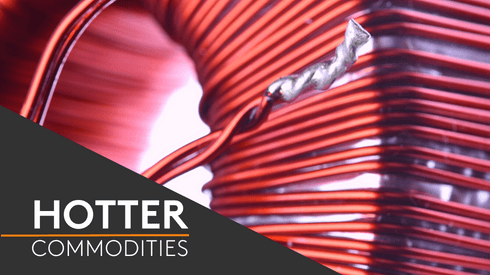It is an unusual occurrence when a note of caution about the copper market emanates from the annual Cesco retreat and wellness meeting, but one has.
Diego Hernandez, president of Codelco, is quoted as saying: “It’s not normal. There is something going on. Stocks are high and some people believe the stocks are being used as a financing tool”.
The open secret is a secret no more; copper has gone to China for punting and financing and was called consumption.
We have contended for some time that the fundamentals in copper are grossly distorted by unreported stocks, primarily in China, and that the increasing scale of the concealment will come back to haunt the market.
We are now starting to see the technical and fundamental threads that will cause the fabric to unravel:
• China, which was the engine of purported demand, has been trading at a discount to the London Metal Exchange for the past six months because the previous imported surplus is being sold there.
• Because of the discount, imports of copper into China have started to decline resulting in increased stocks in reportable locations.
• That copper is going to China at all is in itself remarkable considering the current arbitrage. Why would copper go from a premium area to a discount area? One answer is that the copper has been shipped to bonded warehouse and hedged basis the LME, not Shanghai. If it did not go to China, it would appear as an even bigger surplus in the reportable areas.
• Premiums for physical copper are weak in all markets.
• Treatment and refining charges (TC/RCs) for concentrate have improved substantially and will increase refined production.
• Exchange inventories, LME, Shanghai and Comex, have increased by over 100,000 tonnes this year.
• Copper is in a contango on all the exchanges indicating oversupply.
• Copper inventories in bonded Chinese warehouses (which are not in the statistics) are widely reported to have increased by hundreds of thousands of tonnes this year.
• China is reducing the amount of credit available for speculation.
• Rising US, European and Chinese interest rates will slow the flow of capital into alternative investments and dampen commodity prices.
• Chinese authorities are scrutinising copper, and other commodities, being used for off-balance-sheet financing.
• The proposed physical copper exchange-traded funds (ETFs) are not commercially attractive as can be seen by the one already launched by ETF Securities. The copper ETFs scheduled to be launched this year have yet to demonstrate substance or credibility.
• The gross value of the reported and unreported copper stocks is larger than aluminium’s: $30-50 billion.
• Aluminium is trading at the margins of production cost while copper is trading at a 400% multiple.
Analysts have drawn investment money into copper by portraying that the market is fundamentally tight. Despite a probable increase of copper stocks in the first quarter of this year of several hundred thousand tonnes, some analysts are still calling for 2011 to be in a substantial production deficit.
Not only have the speculators been sold this story, they have also been able to convince consumers to price (buy) forward copper in hopes that higher prices will generate the speculative profit to cover declining margins. Custom copper smelters whose profits were squeezed by producers’ TC/RCs priced concentrate before fixing the price of their cathode.
Where will new buyers come from? The accumulated reported and unreported deliverable inventory is in the region of 3-5 million tonnes which equates to copper’s net long position.
If the forward and futures positions are 5 million tonnes it means that the overall market is long 8-10 million tonnes with only 5 millions tonnes short against it. The ratio of selling to buying is a staggering 2:1.
The copper landscape resembles tin in the 1970s when the tin buffer stock manager was operating. The price has been supported at critical levels and boosted whenever possible. But like tin, supporting prices at levels above the cost of production results in an ever-growing surplus that has be bought and financed by someone.
There is little difference between the housing bubble and the copper bubble both in its initial formation, or its likely outcome. When the liquidation does happen, what will be the collateral damage and who will pay the losses? If it ends as tin did with the failure of the International Tin Agreement, it will not be those who created the problem.
David Threlkeld,
President
Resolved, Inc





